Souchard Method
RPG, developed by Dr. Philippe Souchard, is a rehabilitative method recommended for the conservative treatment of various musculoskeletal pathologies to improve patients’ quality of life and reduce the need for more invasive interventions. RPG is a rehabilitative technique that focuses on the concept of muscular bipolarity, considering the anatomical, functional, and metabolic differences between static and dynamic muscle fibers. According to RPG principles, static muscle function is responsible for postural misalignments and subsequent painful symptoms.
Through the use of active postures involving either the anterior or posterior muscle chain, along with active patient involvement, including diaphragmatic breathing and the performance of isometric (without joint movement) or eccentric (in a position of maximum elongation with subsequent joint movement away) contractions, RPG-trained physiotherapists can counteract the pathological mechanism causing muscle contracture, joint stiffness, and tendon retraction, thereby achieving relaxation of various muscle groups, eliminating compensations, reducing pain, and correcting postural misalignments.
The therapist’s attention is focused on the “center,” represented by the diaphragm, the main respiratory muscle, which must be freed and recruited correctly to conduct therapeutic sessions properly. RPG is a rehabilitation method that considers the patient as a whole, not just the area where the painful symptom occurs. Therefore, the initial evaluation by the physiotherapist regarding postural misalignments and the dominance of one muscle chain over the other is crucial. Patient observation occurs from both structural and functional perspectives, as the goal is to reduce pain, promote correct posture learning, and eliminate compensations.
After the evaluation and discussion of goals with the patient, the therapeutic treatment begins. RPG utilizes “treatment postures,” chosen based on the physiotherapist’s observation of which muscle chain predominates over the other, either the anterior or posterior. The goal of all postures is to achieve global tension gradually and progressively with utmost respect for the patient’s pain, which should guide but not overwhelm the treatment. During treatment, the aim is to approach the so-called “ideal” posture, aligning three points: the occiput, mid-dorsal, and sacral apex.
The treatment postures can be grouped into four families, each allowing for the association of multiple muscle chains:
- Opening of the hip joint and adducted arms: supine, standing against the wall, and standing in the center (more proprioceptive).
- Opening of the hip joint and abducted arms: supine.
- Closure of the hip joint and adducted arms: supine, sitting, standing with anterior trunk flexion.
- Closure of the hip joint and abducted arms: supine.
The choice of the most appropriate posture family is also based on the patient’s daily activities to understand when the pain or dysfunction occurs most frequently, whether standing, lying down, sitting, or bending. Therefore, the treatment is deeply reasoned based on the problem’s origin, history, potential compensations generated even remotely from the onset point, and its functional impact on the patient’s quality of life.
For all these reasons, RPG finds wide application not only for structural abnormalities (scoliosis, hyperlordosis, hyperkyphosis, varus, valgus, etc.), joint abnormalities (cervical, dorsal, lumbar, or peripheral joint pathologies), functional limitations (post-traumatic or post-operative), but also in respiratory conditions (pathologies limiting thoracic or diaphragmatic excursion or respiratory rhythm).
Do you need a medical visit or an exam?
Choose the best care for yourself
Choose the best care for yourself



